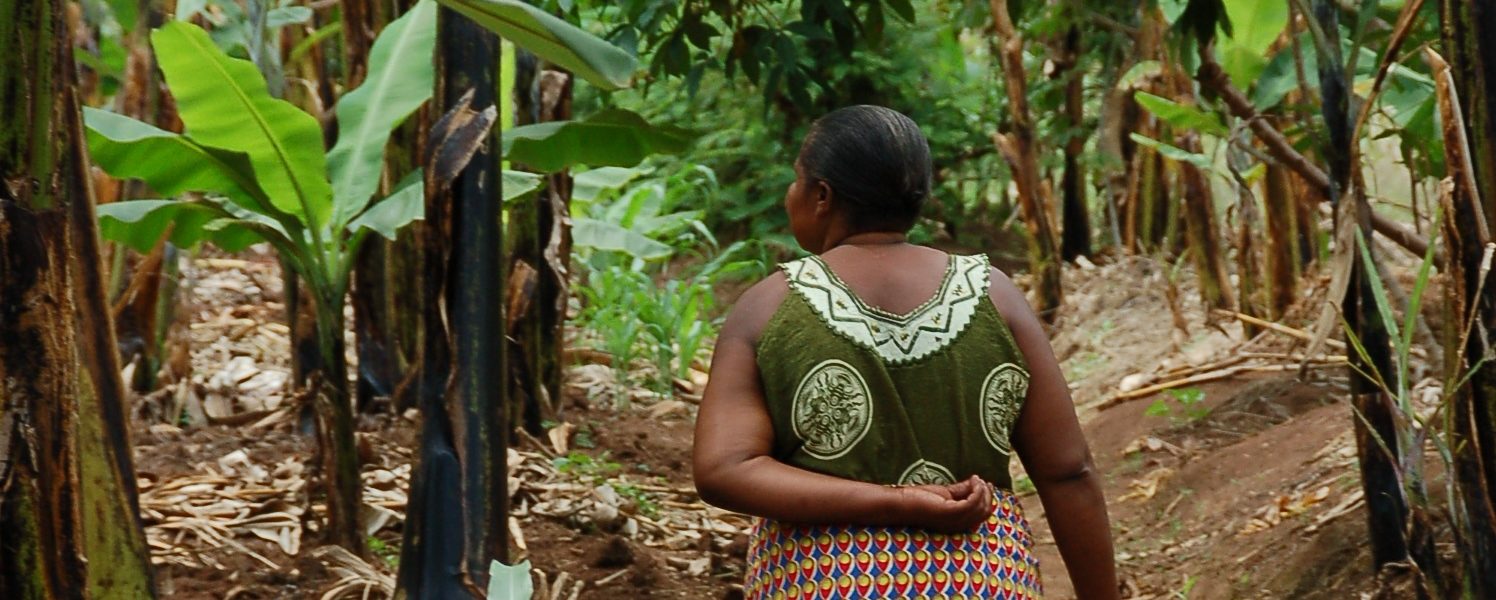In-situ conservation for the genetic diversity of root, tuber and banana crops
Purpose
Monitor landraces using robust tools and protocols in contemporary hotspots, to increase our understanding of conservation dynamics, discover genetic diversity, and motivate farm communities to conserve biodiversity.
Expected impact
New tools will help to conserve root, tuber and banana landraces, within the communities selected for their distinctive characteristics. Outputs include baselines for diversity hotspots and a decision support system to track conservation over time. Impacts are wiser investments in on-farm conservation and benefit-sharing, linked with biodiversity policies and genebanks. Farmers in centers of crop origin will continue to manage diversity if their role is better documented and supported. Documenting biodiversity will lead to the discovery of adapted traits needed to meet upcoming climate and social challenges.
Description of the approach
The egg includes standardized methods to identify diversity hotspots and monitor on-farm genetic resources “from genes to landscapes” using field surveys, participatory GIS, cataloging (with plant fingerprinting and photography), an in situ conservation toolbox, and the In Situ Conservation Knowledge Base (ISCKB). The tools will be accessible to scientists, policymakers, and the public. Many actors are participating in a network of in situ observatories for potato, cassava and banana. Scientists and others will be invited to contribute and supported, to replicate the system for other root, tuber and crops.
Examples of use
Baselines of four crops are revealing unique genetic diversity. In Peru, hundreds of potato landraces were documented in catalogs. The protocols are now used by various Andean organizations, and innovations for benefit sharing have expanded (e.g., the AGUAPAN model, with 100 communities). Previously unknown wild yams are coming to light in Benin. In Papua New Guinea, a drought-tolerant banana landrace called “Menengan” was discovered. The Musa-In-Situ tool documented 2,000 geolocated banana varieties and wild relatives occurrences, from online databases, citizen science projects and literature, adding the information to the ISCKB.
Links to relevant online resource
On farm: exploring the genetic diversity of RTB hotspots
Wild Bananas from Papua New Guinea Boost Food Security for All
On the hunt for wild bananas in Papua New Guinea
Women Custodians Safeguard the Future of Our Food
Where banana diversity defies expectations
Contact persons
Ehsan Dulloo: e.dulloo@cgiar.org
Stef de Haan: s.dehaan@cgiar.org
Michael Abberton: m.abberton@cgiar.org
Erik Delaquis: e.delaquis@cgiar.org
Hana Chair: hana.chair@cirad.fr












